A comprehensive exhibition on Light is currently on show at the Vitra Design Museum. We take the tour.

January 14th, 2014
Top image: Carlos Cruz-Diez, Chromosaturation, 2010 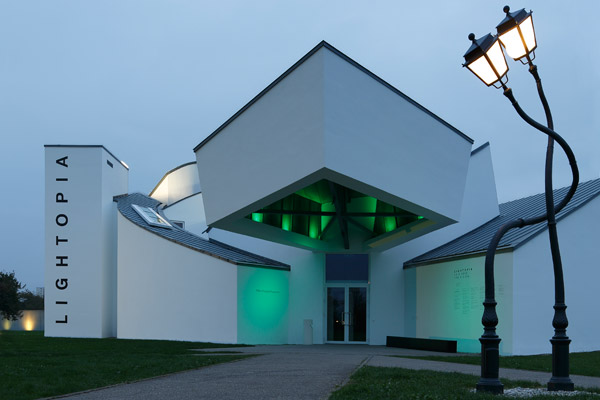 Vitra Design Museum While Frank Gehry’s ‘little jewel’, the Vitra Design Museum, was initially designed as a private museum on the Vitra Campus in Weil am Rhein, Germany, it is today renown not just for its striking architecture, but also for its remarkable, curated public exhibitions such as “Verner Panton: Collected Works” and “Louis Khan: The Power of Architecture”, which travel the world after spending six months in Weil.
Vitra Design Museum While Frank Gehry’s ‘little jewel’, the Vitra Design Museum, was initially designed as a private museum on the Vitra Campus in Weil am Rhein, Germany, it is today renown not just for its striking architecture, but also for its remarkable, curated public exhibitions such as “Verner Panton: Collected Works” and “Louis Khan: The Power of Architecture”, which travel the world after spending six months in Weil. 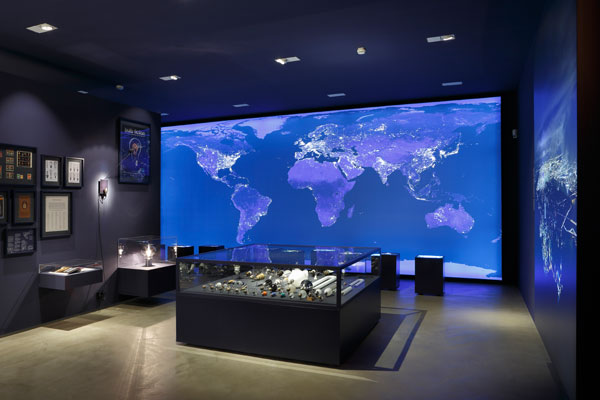 Living in Lightopia “Lightopia” is the museum’s latest exhibition. Comprising roughly 300 works, from iconic artefacts to innovative installations, and from photos to film and other creative genres, the exhibition sets out to give a richly considered account of the advancement of lighting technologies and its profound impact in the domain of artificial lighting.
Living in Lightopia “Lightopia” is the museum’s latest exhibition. Comprising roughly 300 works, from iconic artefacts to innovative installations, and from photos to film and other creative genres, the exhibition sets out to give a richly considered account of the advancement of lighting technologies and its profound impact in the domain of artificial lighting. 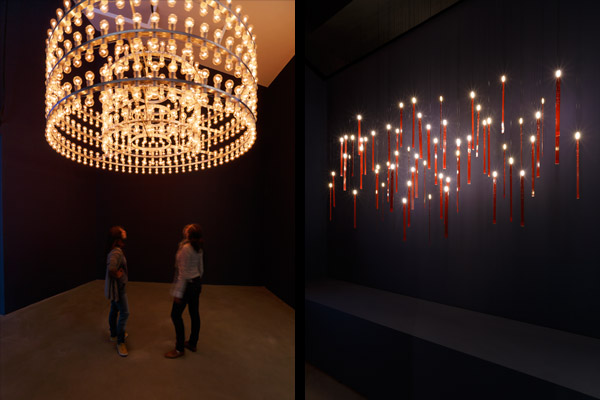 Living in Lightopia. (Left) Alberto Garutti, Temporali, 2009 – 2013; (Right) Ingo Maurer & Moritz Waldemeyer, Flying Flames, 2013 The exhibition is divided into four thematic sections. Visitors begin the tour in “Living in Lightopia”, which portrays the influence of light on today’s living environment, from society’s dependence on light to the negative consequences of light pollution, as well as the innovations and opportunities surrounding new technologies like LED and OLED. Of note here are works that demonstrate the significance of light in modern society such as Joseph Beuys’ readymade Capri Battery (1985).
Living in Lightopia. (Left) Alberto Garutti, Temporali, 2009 – 2013; (Right) Ingo Maurer & Moritz Waldemeyer, Flying Flames, 2013 The exhibition is divided into four thematic sections. Visitors begin the tour in “Living in Lightopia”, which portrays the influence of light on today’s living environment, from society’s dependence on light to the negative consequences of light pollution, as well as the innovations and opportunities surrounding new technologies like LED and OLED. Of note here are works that demonstrate the significance of light in modern society such as Joseph Beuys’ readymade Capri Battery (1985).  Icons of Lighting Design Close by, “Icons of Lighting Design” presents roughly 50 artefacts as milestones of lighting design. Most are derived from the Vitra Design Museum’s own lighting collection, and some are being shown to the public for the very first time. One will find Gerrit Rietveld’s rationalist pendant lamp (1922) and Wilhelm Wagenfeld’s Bauhaus Lamp (1923/24), and further on, George Carwardine’s Anglepoise (1932) and Richard Sapper’s Tizio (1970).
Icons of Lighting Design Close by, “Icons of Lighting Design” presents roughly 50 artefacts as milestones of lighting design. Most are derived from the Vitra Design Museum’s own lighting collection, and some are being shown to the public for the very first time. One will find Gerrit Rietveld’s rationalist pendant lamp (1922) and Wilhelm Wagenfeld’s Bauhaus Lamp (1923/24), and further on, George Carwardine’s Anglepoise (1932) and Richard Sapper’s Tizio (1970). 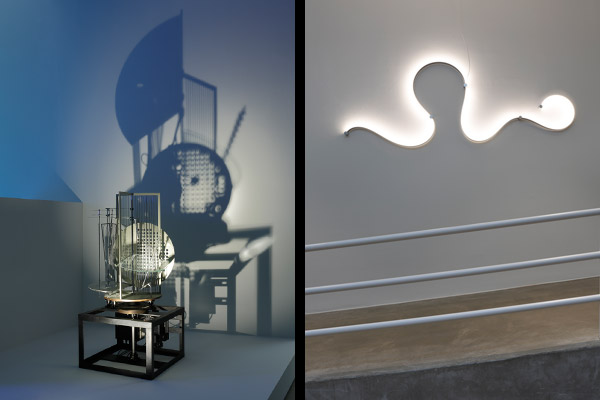 (Left) Light-Space Modulator by László Moholy-Nagy, 1922 – 1930; (Right) Luta Bettonica, FormaLa, 2013 In “Colour, Space, Motion”, the focus moves away from lighting objects to light itself, where emphasis is placed on its capacity to define spaces, create atmospheric moods and tell stories. One will discover how spectacles of fireworks and sound became inspirational models for buildings such as the Palais de l’Electricité at the Paris World Exposition in 1900. It also shows how lighting design has evolved in close connection with interior design and artistic trends with Hans Richter’s experimental films from the 1920s and the famous Light-Space Modulator by László Moholy-Nagy (1922 – 30), a complex kinetic steel sculpture that plays on light and shadow.
(Left) Light-Space Modulator by László Moholy-Nagy, 1922 – 1930; (Right) Luta Bettonica, FormaLa, 2013 In “Colour, Space, Motion”, the focus moves away from lighting objects to light itself, where emphasis is placed on its capacity to define spaces, create atmospheric moods and tell stories. One will discover how spectacles of fireworks and sound became inspirational models for buildings such as the Palais de l’Electricité at the Paris World Exposition in 1900. It also shows how lighting design has evolved in close connection with interior design and artistic trends with Hans Richter’s experimental films from the 1920s and the famous Light-Space Modulator by László Moholy-Nagy (1922 – 30), a complex kinetic steel sculpture that plays on light and shadow.  Palais de l’Electricité, World Fair Paris, 1900 Taking up a key position in this section of the exhibition is a large, interactive installation from Carlos Cruz-Diez’s Chromosaturation series, in which visitors can enter to experience the physical properties of light and the visual perception of colours.
Palais de l’Electricité, World Fair Paris, 1900 Taking up a key position in this section of the exhibition is a large, interactive installation from Carlos Cruz-Diez’s Chromosaturation series, in which visitors can enter to experience the physical properties of light and the visual perception of colours. 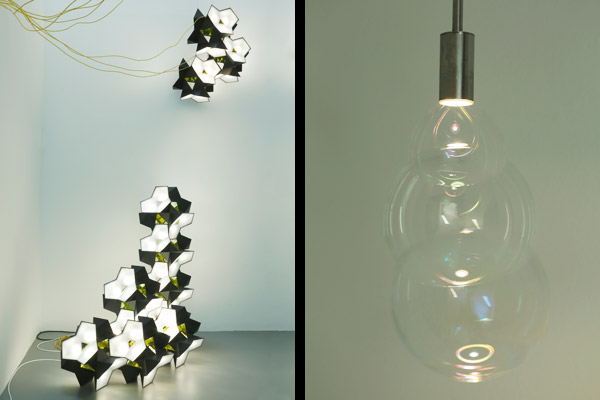 Light of Tomorrow. (Left) Olafur Eliasson, Starbrick, 2009; (Right) Front, Surface Tension Lamp, 2012 The fourth and last segment entitled “Light for Tomorrow” brings the visitor from the first to the second floor of the museum and to the future of lighting design. Housed here – Olafur Eliasson’s Starbrick (2009), draped casually across the floor and on the ceiling as a star-shaped light module with LED, and Christian Haas’ Rope, a soft textile lighting installation that also utilises LED. Other exhibits, at times immersive or interactive, zoom in on the balance between natural and artificial light, between excessive light and sufficient darkness, and between ambient lighting and personalised light sources.
Light of Tomorrow. (Left) Olafur Eliasson, Starbrick, 2009; (Right) Front, Surface Tension Lamp, 2012 The fourth and last segment entitled “Light for Tomorrow” brings the visitor from the first to the second floor of the museum and to the future of lighting design. Housed here – Olafur Eliasson’s Starbrick (2009), draped casually across the floor and on the ceiling as a star-shaped light module with LED, and Christian Haas’ Rope, a soft textile lighting installation that also utilises LED. Other exhibits, at times immersive or interactive, zoom in on the balance between natural and artificial light, between excessive light and sufficient darkness, and between ambient lighting and personalised light sources. 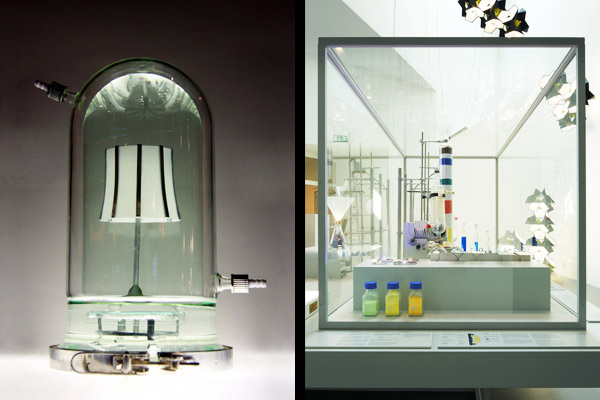 Light of Tomorrow. (Left) Joris Laarman, Halflife Lamp, 2010; (Right) Laboratory situation for the
Light of Tomorrow. (Left) Joris Laarman, Halflife Lamp, 2010; (Right) Laboratory situation for the
production of OLED technology The works of Joris Laarman and Marjan van Aubel among others demonstrate how energy-efficient diodes make it possible to combine lighting and energy production. A significant area here is also dedicated to LEDs and OLEDs. Within a laboratory-like space, pioneering solutions, as well as prototypes and experiments are displayed, showing the possibilities of things to come. 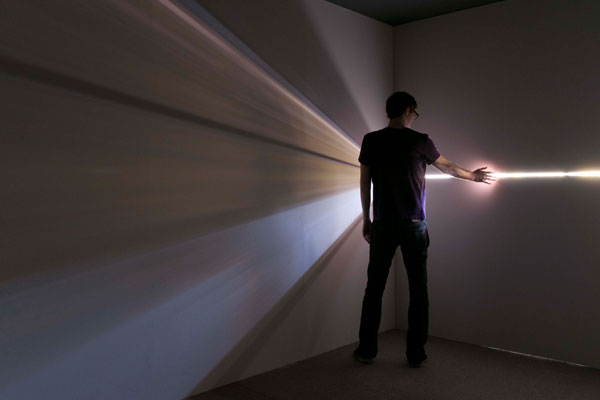 Light of the Future. Chris Fraser, Slant, 2013 Lightopia is held at the Vitra Design Museum, Charles-Eames-Str. 2, D-79576 Weil am Rhein, Germany. Exhibition ends 9 March 2014. For opening hours and further details, visit design-museum.de
Light of the Future. Chris Fraser, Slant, 2013 Lightopia is held at the Vitra Design Museum, Charles-Eames-Str. 2, D-79576 Weil am Rhein, Germany. Exhibition ends 9 March 2014. For opening hours and further details, visit design-museum.de
A searchable and comprehensive guide for specifying leading products and their suppliers
Keep up to date with the latest and greatest from our industry BFF's!

Create a configuration to suit your needs with this curved collection.

The Sub-Zero Wolf showrooms in Sydney and Melbourne provide a creative experience unlike any other. Now showcasing all-new product ranges, the showrooms present a unique perspective on the future of kitchens, homes and lifestyles.

Suitable for applications ranging from schools and retail outlets to computer rooms and X-ray suites, Palettone comes in two varieties and a choice of more than fifty colours.

Sub-Zero and Wolf’s prestigious Kitchen Design Contest (KDC) has celebrated the very best in kitchen innovation and aesthetics for three decades now. Recognising premier kitchen design professionals from around the globe, the KDC facilitates innovation, style and functionality that pushes boundaries.
The internet never sleeps! Here's the stuff you might have missed

Salone del Mobile 2024 is only a few weeks away, so we’re highlighting here seven special events, spaces and installations that we’re certainly planning to check out.

An outstanding line-up of participants will contribute to a beautifully curated exhibition in Thailand that delves deep into the collective thinking of architecture in our region and helps set a progressive agenda for the future of design.